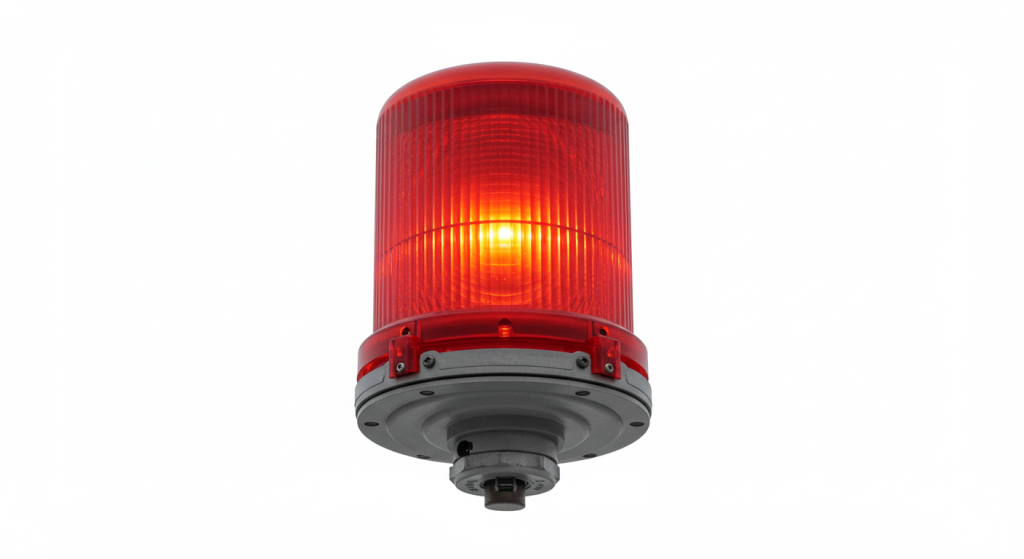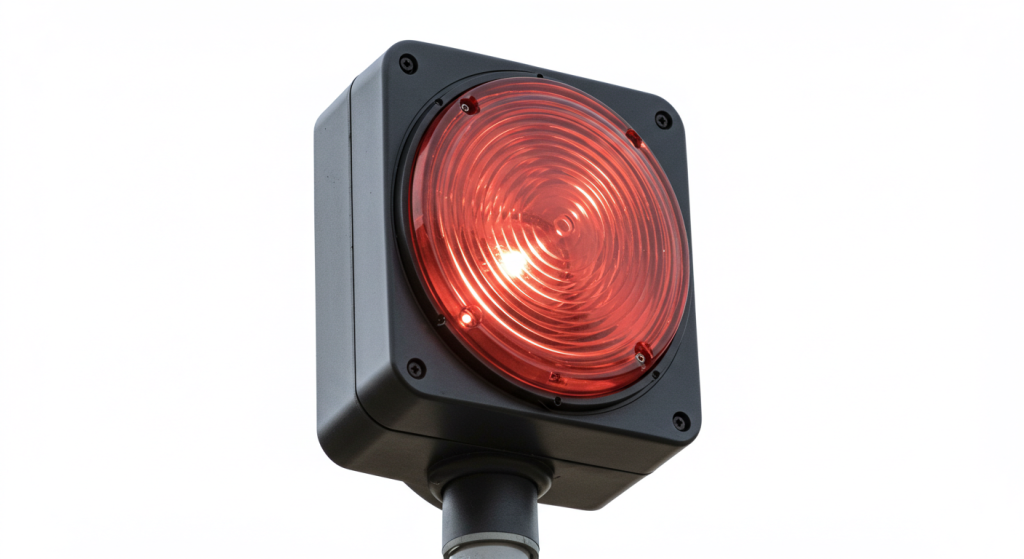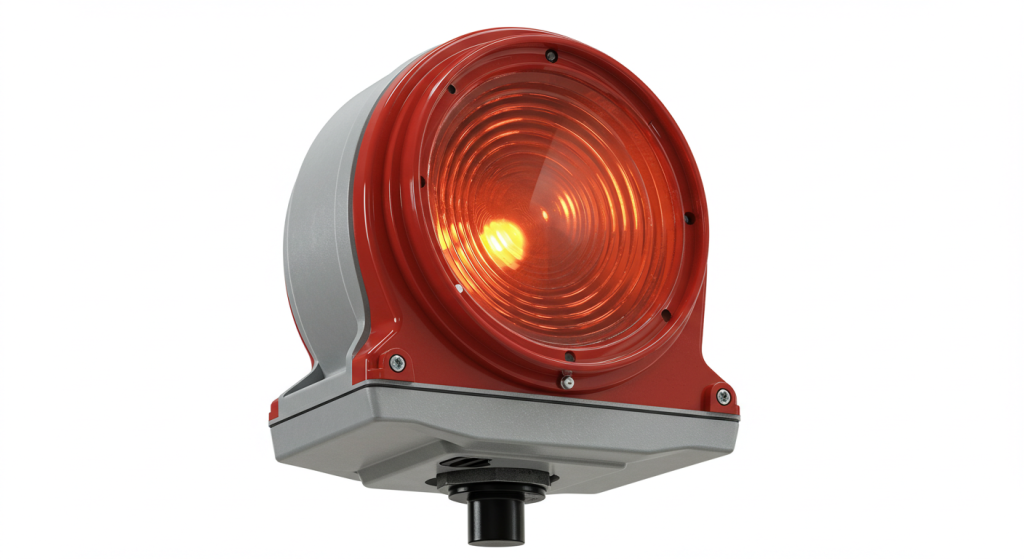As an important facility for modern traffic management, the performance of solar signal lights in extreme weather conditions is crucial for ensuring traffic safety and improving energy efficiency. This article will comprehensively analyze the performance of solar signal lights under extreme weather conditions, including waterproof performance, wind pressure resistance, high and low temperature resistance, as well as lighting protection during continuous rainy days.

Waterproof performance
Solar signal lights need to be installed in outdoor environments, so their waterproof performance is crucial. High quality solar signal lamps have good waterproof design and can work normally in harsh weather conditions. The waterproof level should not be lower than IPX3 specified in GB4208, which means it is waterproof. After the experiment, there should be no accumulated water inside the sample. This means that even in adverse weather conditions such as heavy rain or storms, solar signal lights can maintain normal operation, ensuring the continuity and reliability of traffic signals. When the rainstorm pours in and the city street flows into a river, the traditional signal light may be paralyzed due to the short circuit of the line due to moisture, water inflow in the underground distribution room and other problems. And for solar signal lights, due to the waterproof and moisture-proof treatment of their external solar panels, and the good sealing of their internal circuits, rainwater can only wash their surface and cannot penetrate the core components. Even in strong winds and sudden rain, it still stands steadily, continuously emitting bright and regular signals. Especially in coastal cities, due to the susceptibility to strong typhoons and howling winds, many transportation facilities are severely damaged. However, the sun signal lights installed on the main roads can withstand the test, providing smooth passage for rescue vehicles and ensuring the smooth flow of rescue lifelines.

Wind pressure resistance performance
In areas with strong winds, the wind resistance performance of solar signal lights is also one of the factors that needs to be considered. A sturdy lamp post and reasonable structural design can ensure that street lamps do not collapse or be damaged in strong wind weather. This is particularly important for coastal or windy areas, as solar signal lights in these areas may face stronger wind challenges.
High and low temperature resistance performance
Solar signal lights also need to maintain good working condition under extreme temperatures. Under the condition of an ambient temperature of 55 ℃± 2 ℃, the yellow flashing light should work normally during and after the 6-hour test in working condition. There should be no defects such as deformation, cracking, or gloss changes in the lamp housing and lampshade, and there should be no cracking at the sealing point. Under the scorching sun, the ground temperature skyrockets, and ordinary electrical components may fail due to overheating. However, solar signal lights were designed with heat dissipation in mind from the beginning. The outer shell is made of insulation material, which can effectively block the conduction of external heat to the internal precision components; At the same time, the built-in intelligent temperature control and cooling system automatically starts the fan once the temperature approaches the critical value, accelerating air circulation to take away heat, ensuring that the color display of the signal light is still accurate even under high temperature baking of 40-50 degrees Celsius, and there will be no signal confusion or dimming caused by overheating. Similarly, when subjected to a 4-hour test in working condition at an ambient temperature of -20 ℃± 3 ℃, the solar signal light should also maintain normal working condition. In extremely cold environments such as snowstorms and cold waves in the north, low temperatures can reduce battery activity and make cables brittle. The specially designed energy storage battery of the solar signal light is equipped with a cold resistant medium, which can maintain normal charging and discharging functions in low temperature environments of minus 20-30 degrees Celsius. The lamp body structure is reinforced with a cold resistant design, which can withstand heavy snow pressure. Its light-emitting diodes are selected as low-temperature resistant models. Even if the surface is partially covered by thick snow, the light emitted can still guide the direction of the road, allowing vehicles and pedestrians traveling in winter to safely follow this stable signal.
This indicates that solar signal lights can operate normally in the cold winter or extremely hot summer, ensuring the stability of traffic signals.

Lighting guarantee for continuous rainy days
Under continuous rain, snow, and cloudy conditions, solar signal lights can ensure normal operation for 72 hours. This is because solar signal lights are usually equipped with energy storage devices, such as batteries or super capacitors, which are charged by solar energy during the day and powered by energy storage devices at night. This ensures that the solar signal lights operate continuously for 24 hours and provide normal signal indications.
Lightning protection measures
In areas with frequent lightning strikes, solar signal lights are prone to damage from lightning strikes. To protect the equipment, a series of lightning protection measures can be taken. For example, installing lightning rods or lightning strips, effectively grounding the streetlight system, and increasing the lightning protection level of the equipment
In addition, lightning protection components such as TVS diodes and lightning protection bottles can also be used in circuit design to absorb lightning current and protect the normal operation of equipment.
Night lighting effect
In low visibility conditions at night, in order to ensure the safety of pedestrians and vehicles, solar signal lights need to have high brightness and a wide illumination range. In design, high brightness and high-efficiency LED light sources can be selected to improve the lighting effect. In addition, a light controller or dimming technology can be used to automatically adjust the brightness according to different weather conditions and environmental requirements, avoiding energy waste and light pollution.
Measures to cope with extreme weather
In extreme weather conditions, such as cold winters or extremely hot summers, the sensitivity of the solar signal light battery pack to temperature will increase. Therefore, it is necessary to adopt anti freezing or anti heat technologies to ensure the normal operation of the battery pack. For example, in winter, heating the battery pack can be used to prevent it from failing due to low temperatures and ensure the normal operation of solar signal lights. In summer, heat dissipation devices can be used to maintain the temperature of the battery pack within a suitable range, avoiding malfunctions caused by overheating.
Conclusion
The performance of solar signal lights in extreme weather conditions is multifaceted, involving waterproof performance, wind pressure resistance, high and low temperature resistance, and lighting protection in continuous rainy days. By adopting appropriate design and testing measures, solar signal lights can adapt to various harsh weather conditions, ensuring the stability and reliability of traffic signals. With the continuous advancement of solar energy technology, these signal lights have become more reliable, cost-effective, and environmentally friendly, providing strong support for traffic safety and energy conservation.